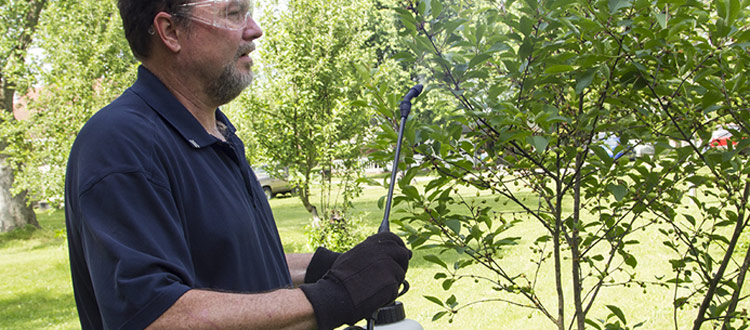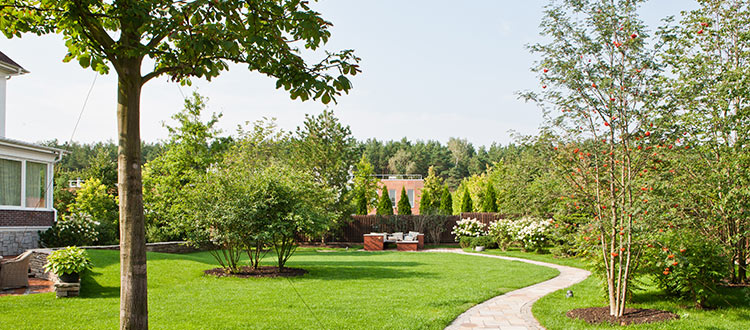3 Tips for Young Trees – Pruning, Tree Care and Protection
The environment and exposure in the beginning of plants and trees lives greatly impact their long-term health. Proper pruning of your trees and shrubs can help a plant’s structure and allow air to flow properly. Doing proper pruning while trees are young will lead to trees not needing a lot of corrective pruning when they are mature. Likewise, sufficient watering and soil conditions are necessary for nutrient consumption. This article outlines useful tips for pruning and caring for young trees.
Tree Pruning Considerations and Trimming Techniques
Principles to follow when pruning a tree:
- Always cut with a purpose.
- Before picking up your pruning tools, make sure you learn how and where to cut.
- A wound is forever contained in the tree as trees grow over damages so, a lot of care should be applied to pruning.
- Tree issues are best corrected when they are young as smaller cuts do a lesser amount of damage than larger cuts.
Making the Pruning Cut
The location of a pruning cut is very important to the growth of a tree. To avoid harming the trunk, pruning cuts should be made just outside the branch. Improper pruning cuts may lead to permanent internal decay. When shortening large branches, they should be pruned back to a bud or secondary branch as cuts made between branches and buds sometimes lead to sprout production, misdirected growth and stem decay.
Watering, Fertilizing and Caring for Young Trees
The first 5 years are important to the health of a tree. Proper watering, fertilizing and tree care will guarantee a mature, healthy tree and significantly decrease maintenance costs in the future.
Watering Young Trees
- Trees should be deep watered to promote disease prevention and good health. Deep watering stops the forming of weak surface roots and boosts the development of robust underground roots.
- Soil moisture (below the surface) should be checked every four to six weeks. Soil should not be wet but moist.
- Mulch should be used atop tree soil to help with moisture conservation. About five inches of mulch which extends about two feet around the tree (creating a circle), should be used to cover the base of the trunk.
- Lawn irrigation is inadequate for tree irrigation as it only waters a few inches of soil and which leads to weak surface roots.

Fertilizing Young Trees
Fertilization of shrubs and young trees is best done in spring. Fertilization of shrubs and trees will make for healthier trees. In the urban forest, fallen leaves of trees and shrubs are raked up preventing them from providing nutrients for the soil. Fertilization helps in replacing nutrients lost in leaf removal. Regular application of fertilizer is beneficial to young trees, however, larger trees that are close to regularly fertilized lawns do not necessarily need fertilization.
These following questions should help you decide if your trees need fertilization:
- What is your tree’s annual growth?
- Is this growth less than it should be?
- Has there been any insect or disease problems recently?
- Has the size, color or foliage quantity changed in the past few years?
If the answer to any one of these questions is yes the fertilization might be beneficial for the tree.
Fertilizer should be applied along the tree’s drip line or it can be “peppered” on the ground around the drip line of the tree. Either of these two methods should provide a sufficient quantity of fertilizer. Fertilizer should be applied right before it rains, that way, it can enter the root zone or the fertilized area should be watered for about an hour after application if rains are not an option.
Protecting Young Trees from Potential Damage
Weeding; Weeds and Plants contend with the tree for nutrients and water. The base of a tree should be kept free of other plants such as grass or weeds.
Protection from lawn equipment; lawn equipment such as mowers and weed whackers can be harmful to the tree. Cuts in the cambium layer, can eternally interrupt transport of nutrients and water to the tree and leave the tree vulnerable to infection by diseases and pests.
Protection from chemicals; herbicides and pesticides can damage a young tree’s leaves and roots.
Water conservation; mulch should be placed around the tree to help conserve moisture, prevent roots from drying out and to suppress weeds.
Young trees are vulnerable, but when cared for properly, they will develop into a lasting mature specimen. Implement the tips mentioned in this article to ensure the health of your young trees.
The Fast Tree Removal Services Atlanta team has planted and cared for thousands of trees. If you need help caring for young or newly planted trees, see below to get in contact with our team. Follow this link for more tree care articles.
(404) 220-9965

